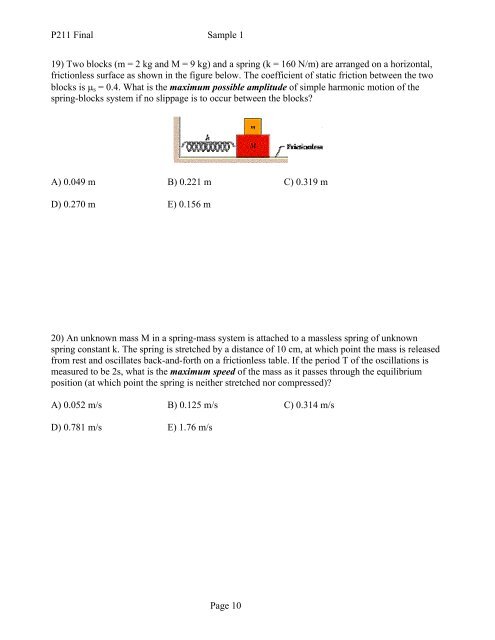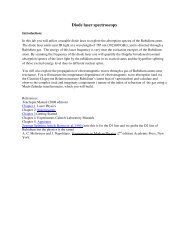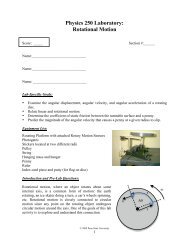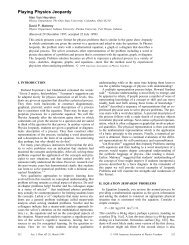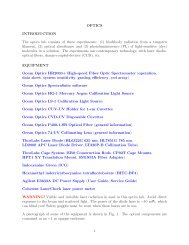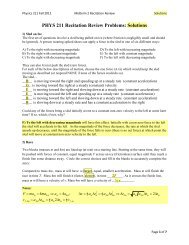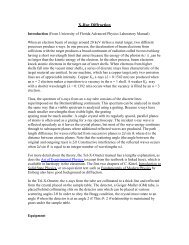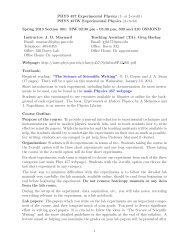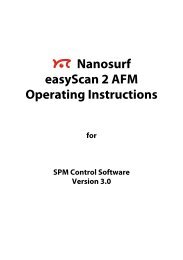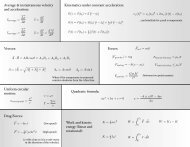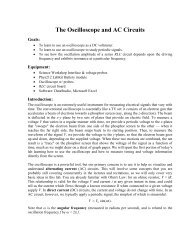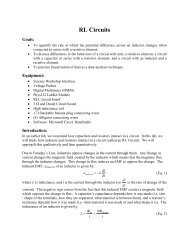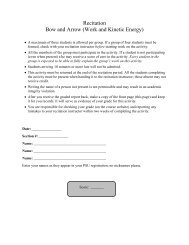0 5 10 15 20 25 30 0 2 4 6 Time (s) X (m) 8
0 5 10 15 20 25 30 0 2 4 6 Time (s) X (m) 8
0 5 10 15 20 25 30 0 2 4 6 Time (s) X (m) 8
Create successful ePaper yourself
Turn your PDF publications into a flip-book with our unique Google optimized e-Paper software.
P211 Final Sample 1<br />
19) Two blocks (m = 2 kg and M = 9 kg) and a spring (k = 160 N/m) are arranged on a horizontal,<br />
frictionless surface as shown in the figure below. The coefficient of static friction between the two<br />
blocks is μ s = 0.4. What is the maximum possible amplitude of simple harmonic motion of the<br />
spring-blocks system if no slippage is to occur between the blocks?<br />
A) 0.049 m B) 0.221 m C) 0.319 m<br />
D) 0.270 m E) 0.<strong>15</strong>6 m<br />
<strong>20</strong>) An unknown mass M in a spring-mass system is attached to a massless spring of unknown<br />
spring constant k. The spring is stretched by a distance of <strong>10</strong> cm, at which point the mass is released<br />
from rest and oscillates back-and-forth on a frictionless table. If the period T of the oscillations is<br />
measured to be 2s, what is the maximum speed of the mass as it passes through the equilibrium<br />
position (at which point the spring is neither stretched nor compressed)?<br />
A) 0.052 m/s B) 0.1<strong>25</strong> m/s C) 0.314 m/s<br />
D) 0.781 m/s E) 1.76 m/s<br />
Page <strong>10</strong>


